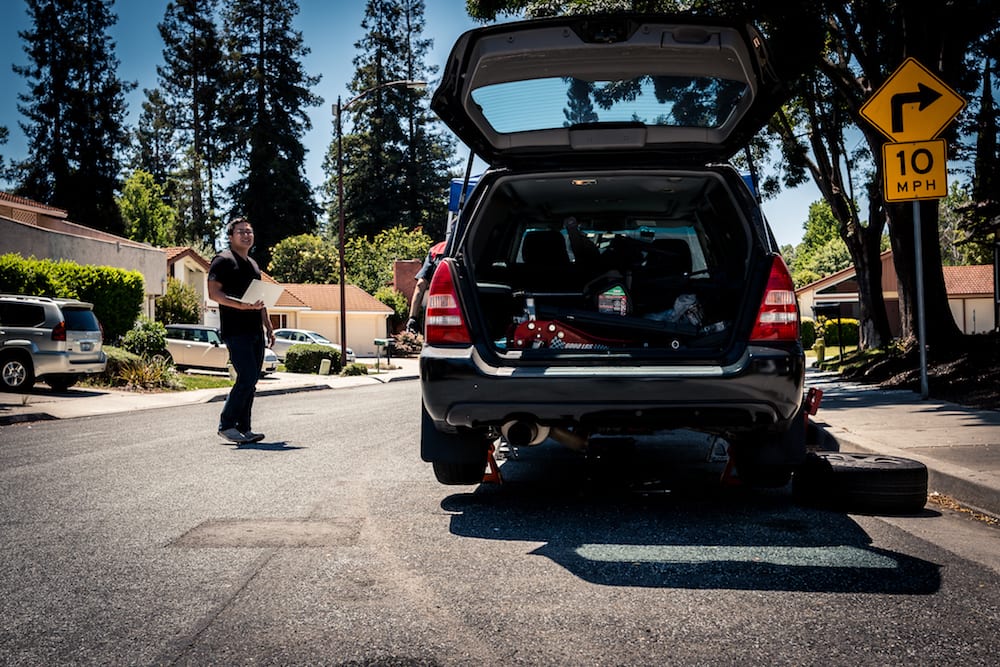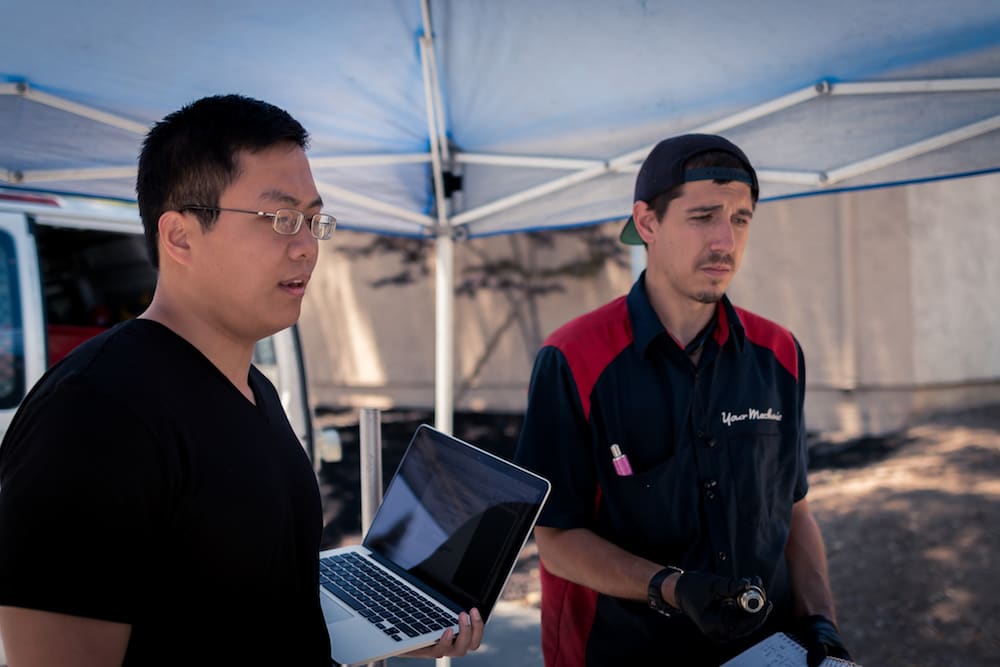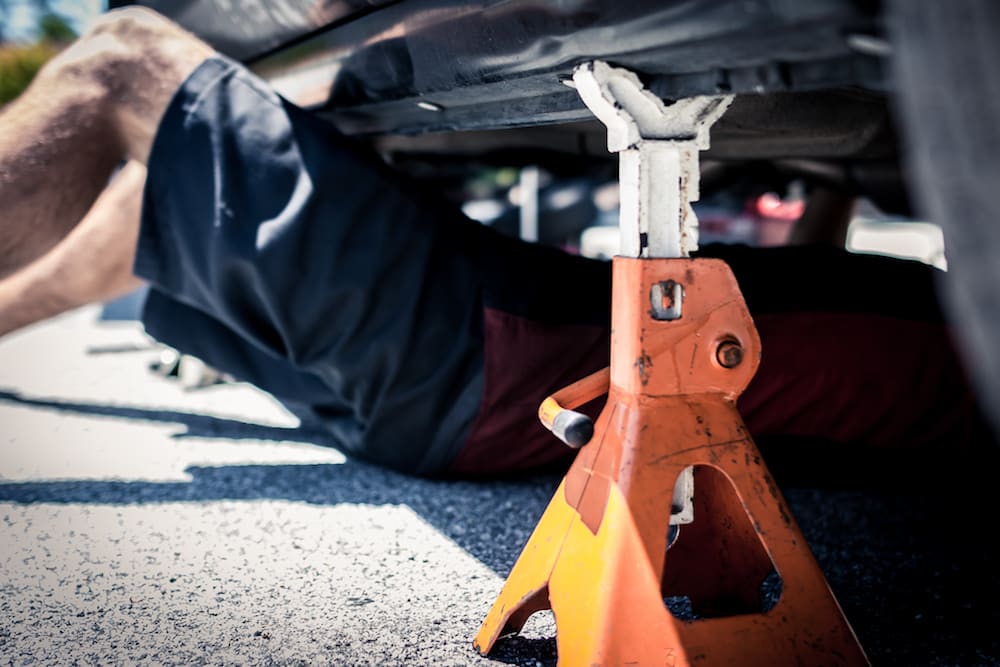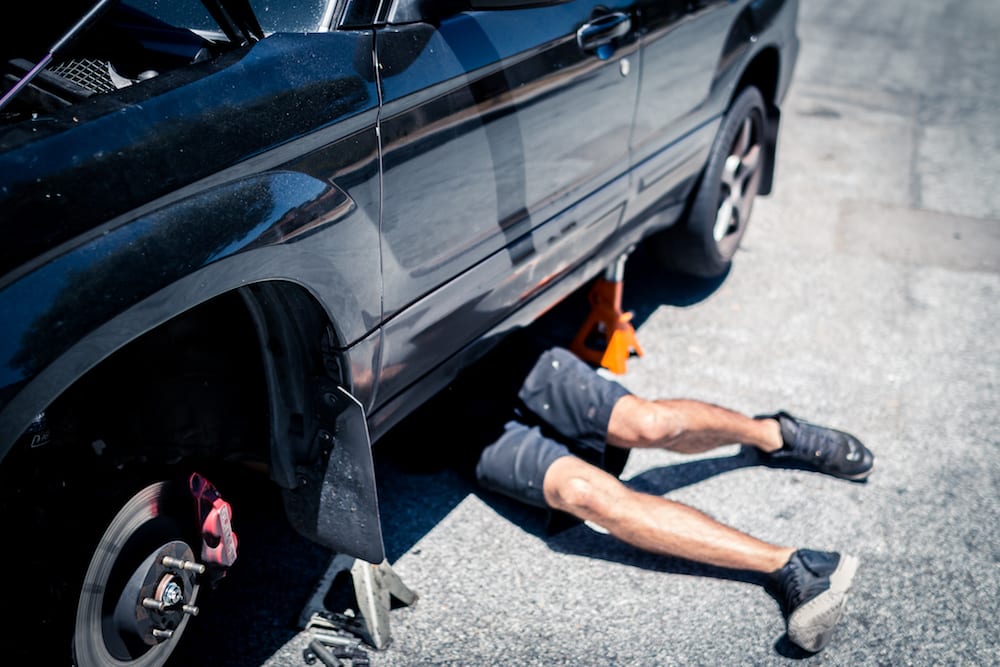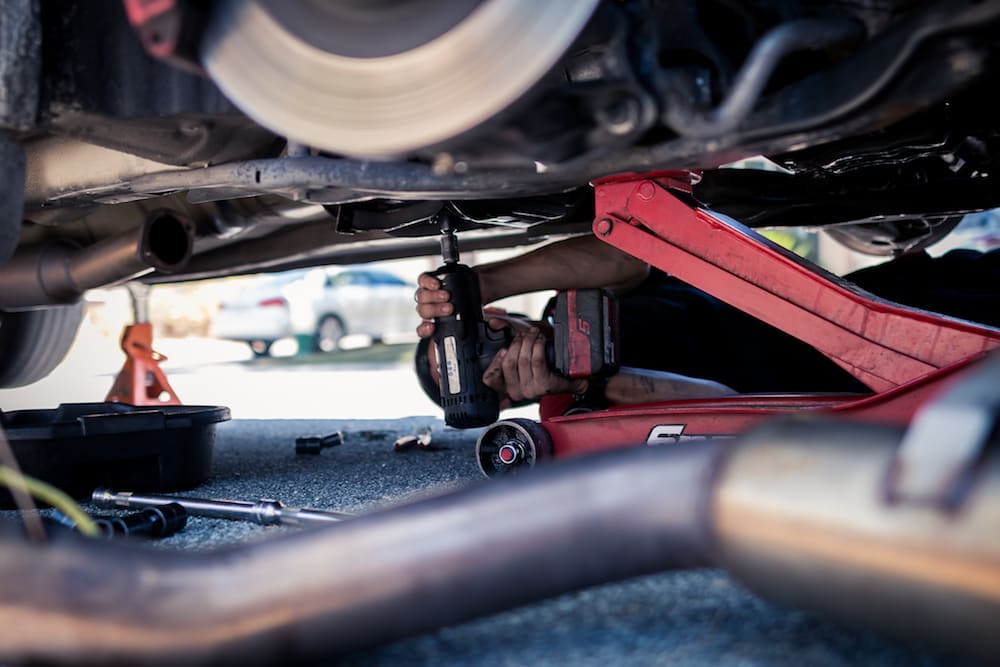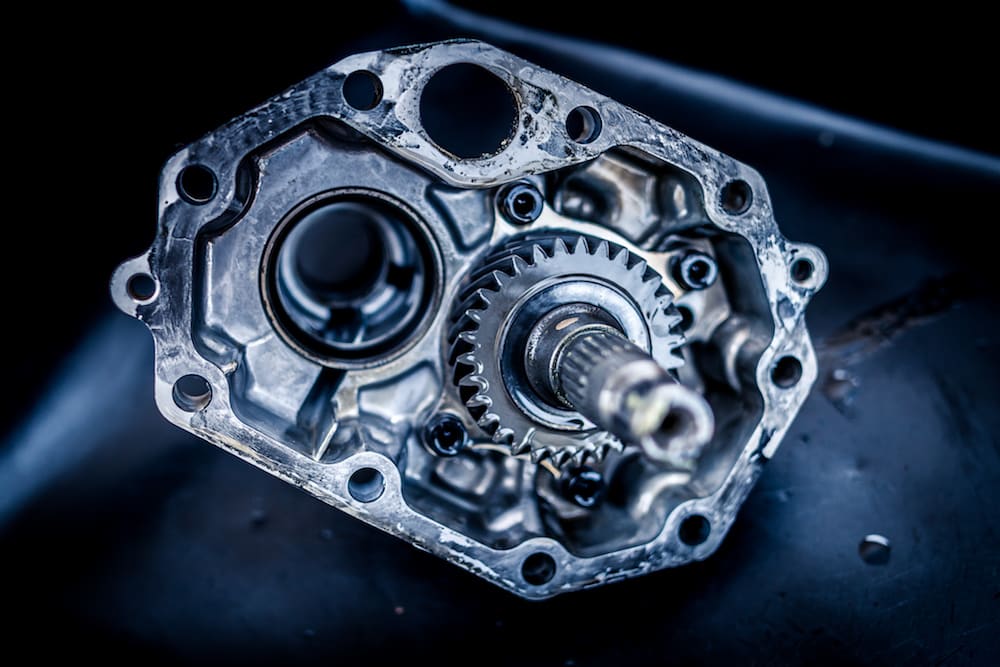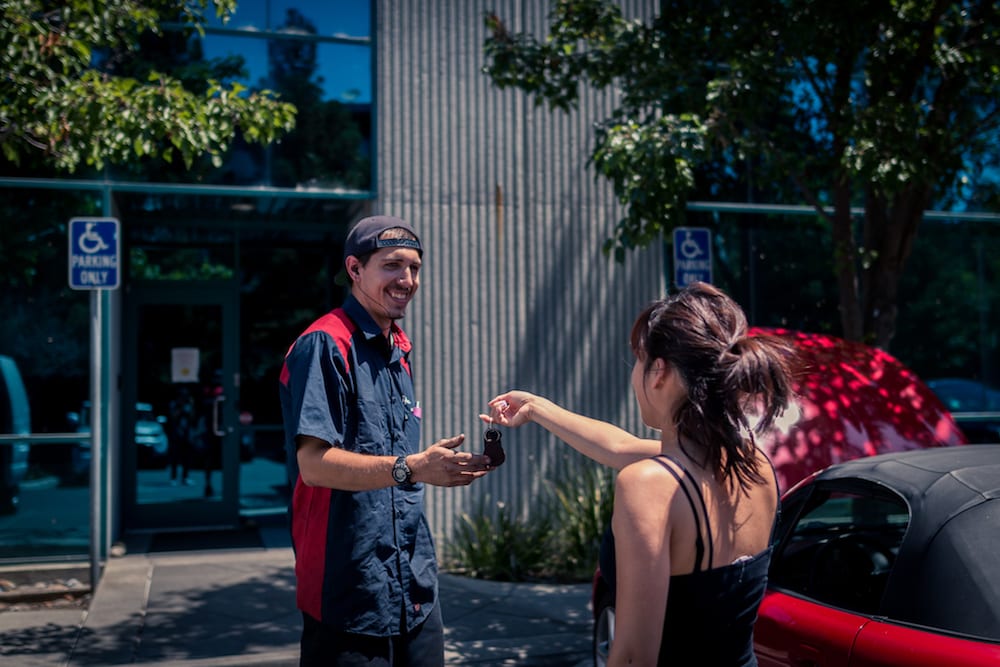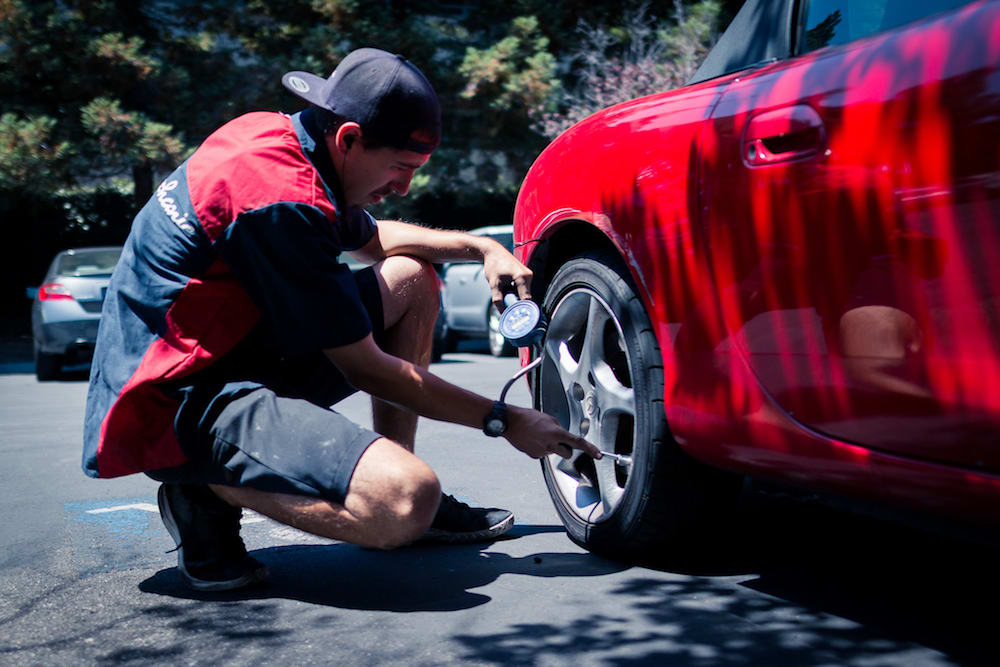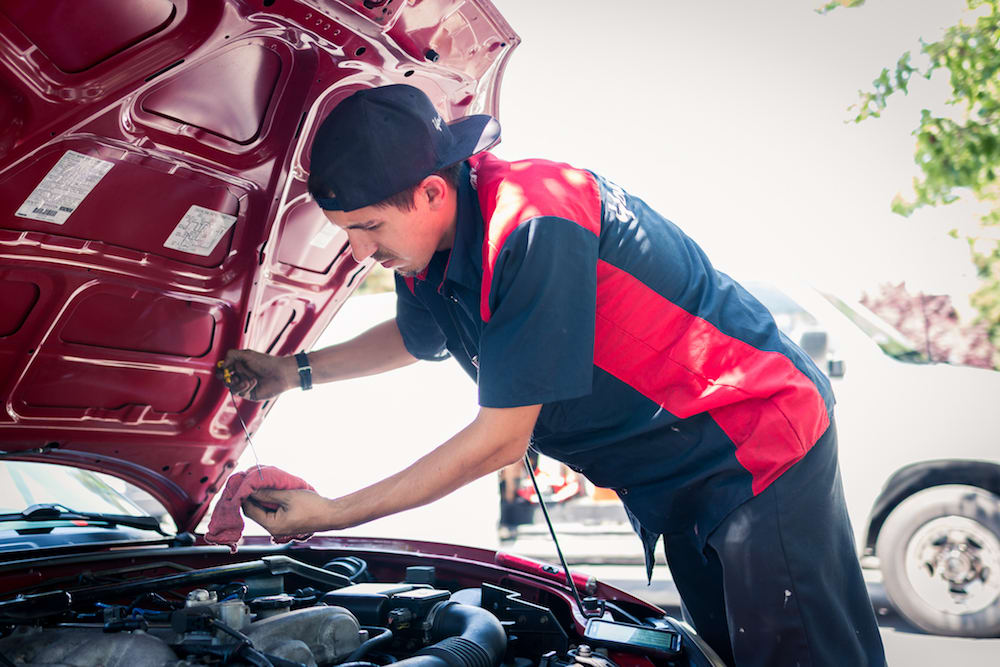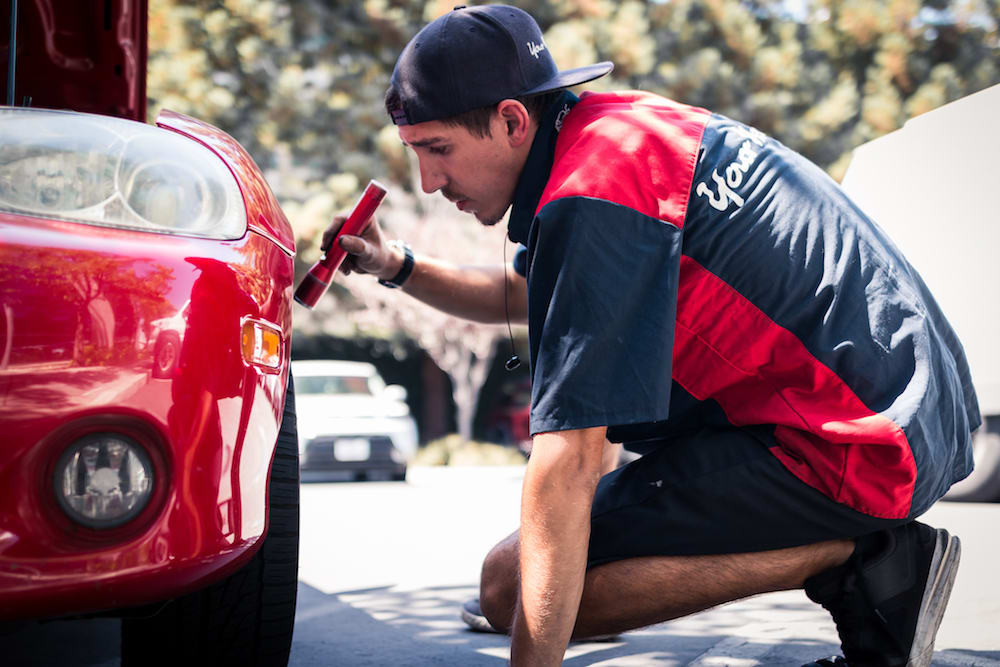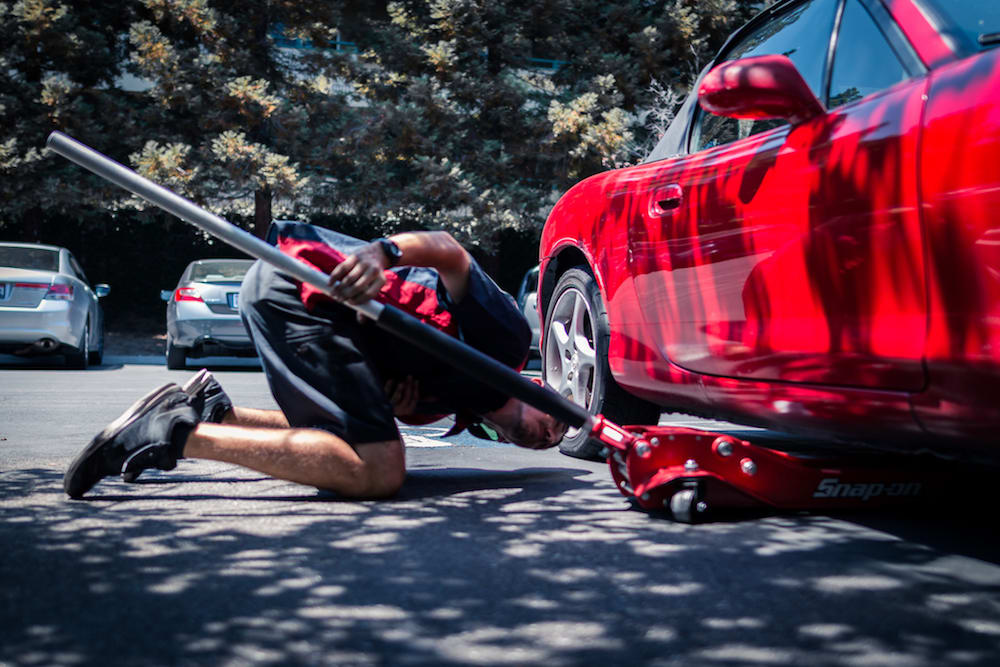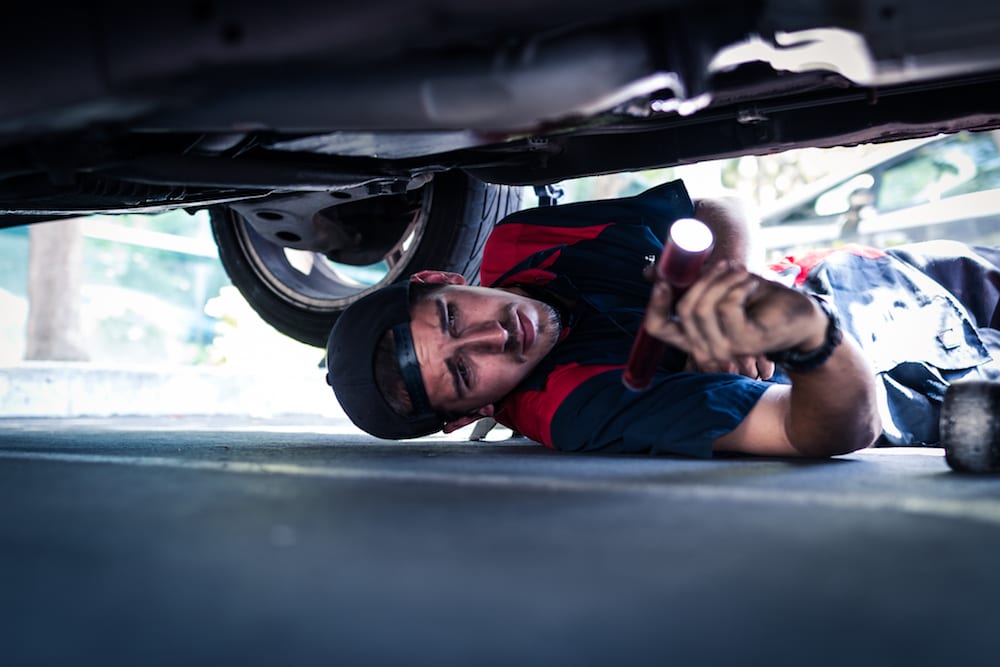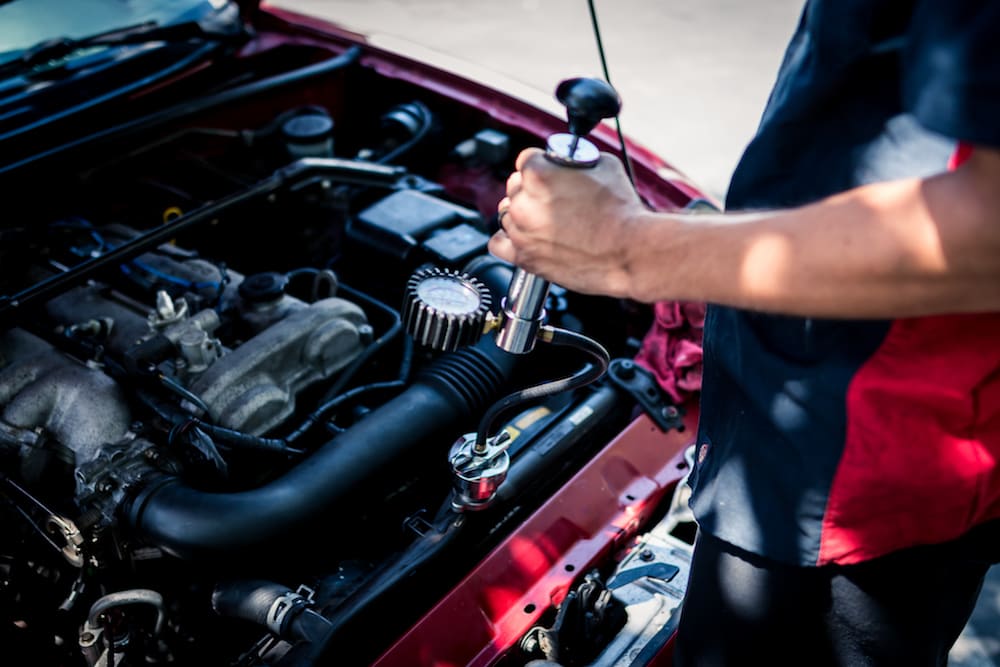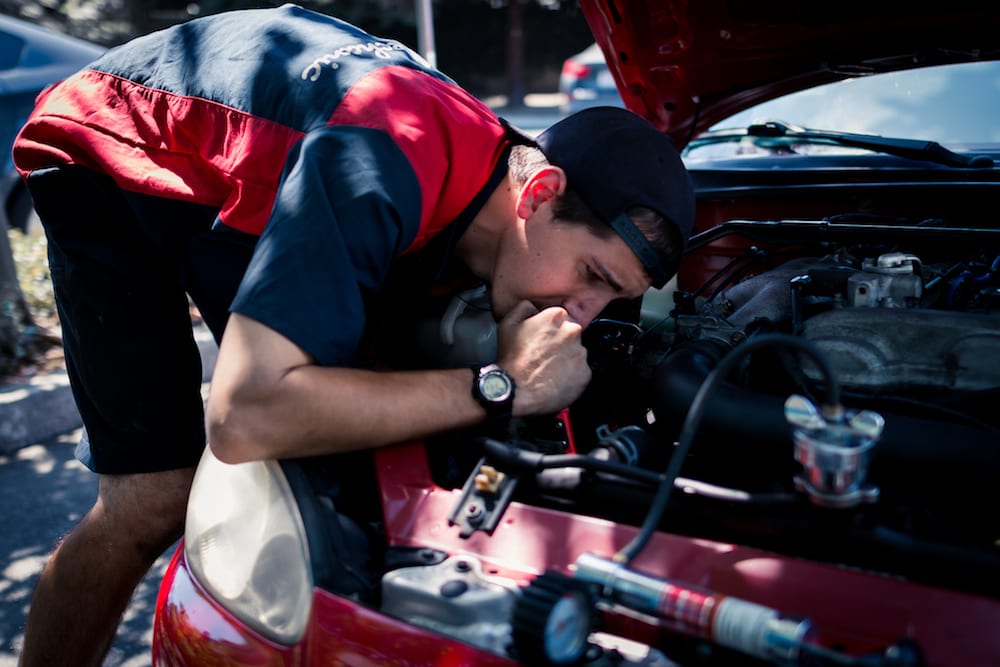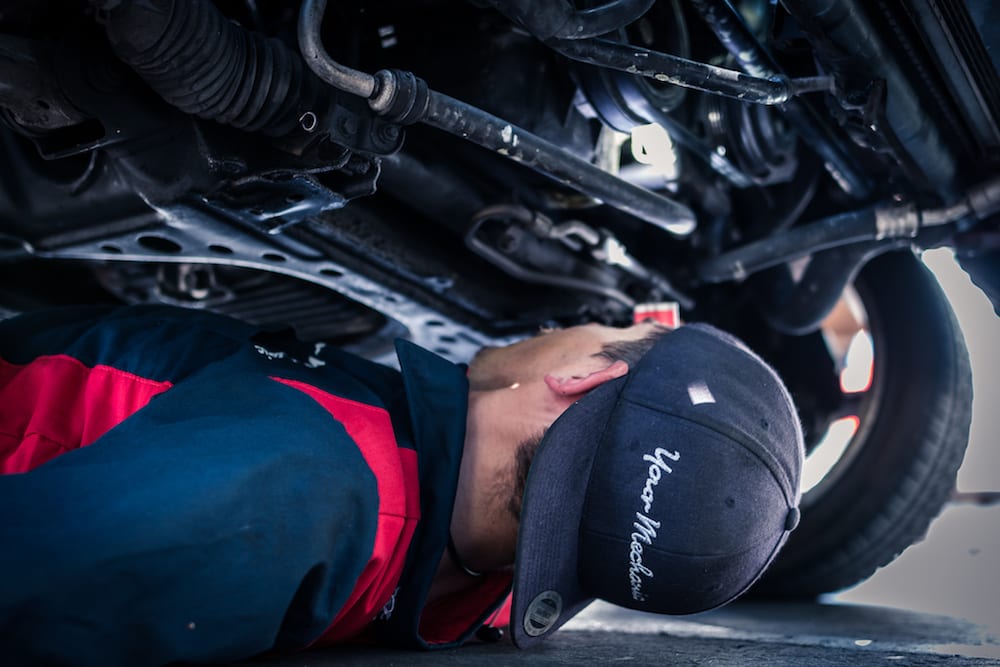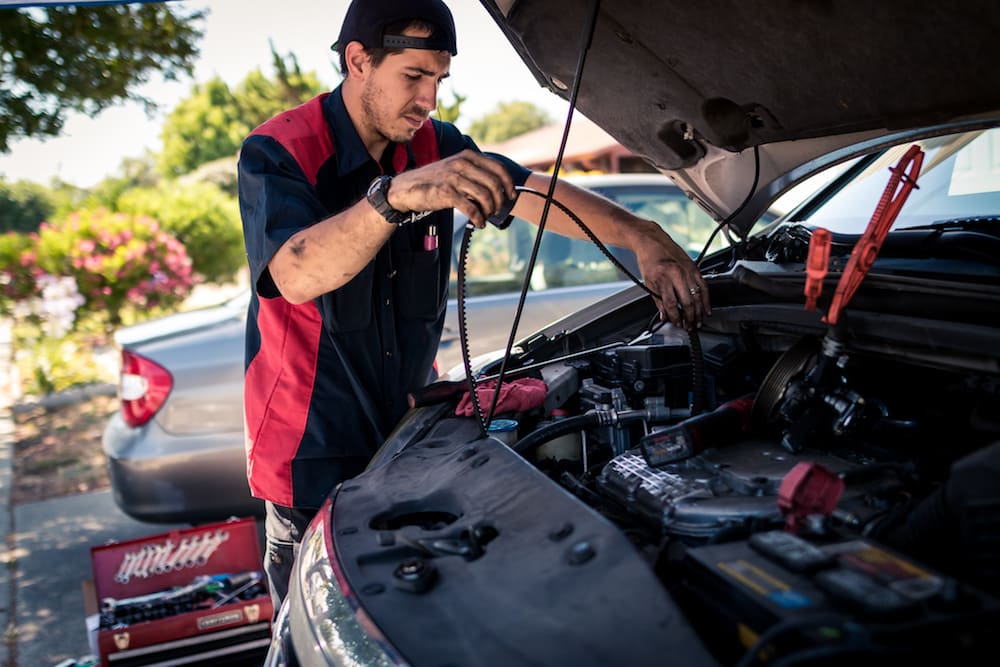

Mark Lenhart is one of YourMechanic’s top-rated technicians with a 5-star average rating from more than 250 customers. He has six years of professional automotive repair experience and has been working with YourMechanic since 2014. In addition to his ability to perform complicated mobile jobs at remarkable speeds -- he’s known for taking apart automatic transmissions with 400 parts and repairing them in record time -- he’s also known for his correct diagnoses and always having the right tool for the job. Here’s what a typical day in his life looks like.
9:00AM
Fresh coffee brewing in the kitchen wakes me up this morning and when I get to the kitchen I see my wife has set out a full coffee pot and left some breakfast pastries. This doesn’t happen too often so I’m pretty happy when it does! While I’m eating I go over my appointments for the day and see if I’ve had any questions come in from current customers or Customer Service. I know a lot of my customers pretty well at this point and always ask them to give me as much detail as possible before I show up. This morning, a customer has sent me a note that the whining he hears in his engine got worse last night. I tell him not to drive the car before I get to our pre-arranged appointment or else the timing belt risks more damage.
I got all the parts I need for today’s appointments last night from the shop nearby, so I send my ritual “good morning, have a great day” text to my wife (she gets to work very early) and head out the door to my first appointment, hitting the “On my way” button in my YourMechanic app to let the customer know I’m headed over and will be on time.
Once I arrive, my customer comes outside to meet me. This job involves resealing the tail housing of the manual transmission on a 2005 Subaru Forester 2.5 turbo. This includes removing the shift shaft seal, the output shaft seal (where the driveshaft enters the tail housing), the manual transmission mount, and resealing the tail housing.
Before I start working on the Forester I inspect and lay out all the parts to avoid working on a defective part. There are two seals, a shift shaft seal, a output shaft seal, a manual transmission mount, and the gear oil RTV silicone.
I jack up the vehicle so I can get to the transmission. On this vehicle I have to jack up all four wheels because it’s an all-wheel drive. Side note: my favorite jacks are Craftsman - they’re pretty solid and fairly affordable. Once I have it at a decent height, I set up jack stands on the pinch welds of the car and let it down onto the jack stands.
I start taking apart the vehicle with the exhaust first. The heat shield above the turbo covers the downpipe bolts that need to be accessed so that has to be removed. After I take off the bolts holding the downpipe to the turbo, I can get under the car to remove the downpipe itself.
The first thing I do under the car is drain the gear oil into a clean pan. This customer has just done a manual transmission fluid service a week ago, so the fluid is very new, so I re-use the fluid.
I then remove the driveshaft bolts and slide it out of the transmission and pull it down from above the exhaust. Some fluid may drip off with it so I always have a rag or small pan ready to rest it on (a pan, today), and then move out of the way. I then remove the transmission crossmember, disconnect the shifter linkage, and then finally remove the transmission tail housing.
Once all the parts have been removed and added to the parts pile, I clean the mating surfaces of the tail housing and transmission of any old silicone or gear oil. Once they’re clean I install the output shaft seal and shift shaft seal and reinstall the gear set into the transmission.
When I have the car back together and full of fluid, I jack it up to remove the jack stands. Once the car is on the ground I start it and let it run while I clean up -- about 5 minutes. With everything put away, I lock up my shop-on-wheels and take the vehicle for a test drive during which I’m listening for and abnormal noises, and to make sure everything feels good and solid. I drive for three miles, then come back and let it run for another 5 minutes while I check for leaks. Everything checks out I explain to the customer everything I’ve done. He’s happy which makes me happy!
12:00PM
With the first half of my day done, I’m running ahead of schedule. I call my wife and she has some time, too, so we meet up for coffee in the park near her office. She’s seven months pregnant so I love to see her as often as I can to make sure she’s feeling well and to see if I can help with anything. We talk about what color crib will match the pink walls in the baby’s room (it’s a girl!).
12:45PM
After I drive my wife back to her job I’m still a little ahead of schedule so I contact my next customer to see if I can show up a little early (she says yes).
1:00PM
The vehicle is a 2003 Mazda Miata 1.8. This job is an inspection for a possible coolant leak or overheating condition. She said that a few times after starting the vehicle and while driving she sees white smoke coming out the tailpipe and that the coolant drips. My suspicion is that it could be a cylinder head gasket leaking anti-freeze into the combustion chamber or maybe a cracked engine block.
I start my inspection by taking pictures of the car, including two side angles, the front and rear license plates, and the dashboard (to capture the mileage). This gives me a baseline of the condition of the car and how often the owner maintains it.
I check the tire pressure with my digital tire gauge that gives me a PSI reading down to the decimal point. Then I check all the fluids, starting with the engine oil. The car is cold so I let it run for about 20 seconds to circulate the oil.
Then I check the transmission fluid. In this car I need to check the fluid level while the car is running, and it’s a bit low, pretty dirty, and has a bit of a burnt smell, too, so it should be changed soon. I make note of that recommendation; I’ll compile all my recommendations at the end of the inspection.
The brake fluid is next. The fluid level gives me an idea of the brake pad thickness - unless someone has topped it off (which you should never do!). Normally, the brake fluid level falls as the brake pads wear down. Then I check the condition of the brake rotors and the thickness of the brake pads and mark them in my app.
I then check the power steering fluid. Again checking the color and fluid level here, but I also like to smell the steering fluid too. Dirty power steering fluid has a distinctive smell - like burnt marshmallow. This can indicate the wearing of internal parts and contaminants in the system.
Finally, I check the coolant level. It’s just about full and only slightly low.
Checking and changing all the fluids at regular intervals is important for the life of the hoses, pistons, valves, seals, and the power steering pump itself. Flushing your fluids on a regular basis to keep your car running well and to prevents unsafe - and expensive - repairs.
Although a timing belt and water pump were just installed a few days before, I still need to check with my pressure tester. It’s important to always pressure test the cooling system because most leaks don't appear until the system is under pressure.
Now I give the car a thorough visual inspection. As the vehicle is running rough I pull out a few spark plugs to examine them closely. I look at the condition and color of the tip of the spark plug. Usually, a light tan color around the tip of the spark plug indicates a healthy engine but if the tip of the plug is any other color or condition, it can mean there’s an issue with either the engine, the fuel system, or the ignition.
Now I jack up the vehicle so I can get a good look underneath. I jack up one side pretty high (about 20 inches) in the air so I can easily slide under the car and have a look around. I also put some jack stands under the pinch welds, just in case.
Once the car is raised I climb underneath and examine the underside components with a flashlight. The first thing I notice is the transmission pan gasket is leaking pretty heavily, so I’ll be sure to recommend a transmission fluid service.
The next thing I notice is an engine oil leak on the passenger side of the engine. It looks like the oil filter adapter o-ring is leaking. After talking to the customer, it turns out that she had it replaced recently so the oil could be left over from a previous leak (or it was installed incorrectly or without lube on the o-ring). My recommendation here is to keep the area clean and to keep an eye on it.
After a quick visual of the suspension components and after checking for any other leaks, it’s time to pressure test the cooling system. I leave the vehicle jacked up so I can check underneath for coolant trails once I have the pressure tester installed. On this vehicle the coolant level is nearly full, but if the coolant level is low, you have to first add water before pressure testing, otherwise it may not show leaks.
First I remove the radiator cap and install the adapter for this vehicle. Now I can install the pressure tester itself and pump the tool up until the gauge is at about 15 PSI. Before I check for any leaks I like to watch the gauge for about a minute to see if the pressure slowly drops. On this car the pressure is slowly dropping off at a steady rate, indicating a problem.
Now I can go looking for leaks. Almost immediately I see the upper radiator hose is dripping. But I also notice that there is a spring clamp installed, and it was recently removed and re-installed in the wrong position. I release the pressure and re-install the clamp into its old position and re-pressurize the system - the dripping stops for the moment. Though it may come back, there is no point in replacing a hose if it doesn’t need to be replaced, but a good eye should still be kept on it.
Next I notice that the bottom end of the radiator where the fins meet the plastic tank is very wet. It looks like the car is going to need a new radiator. I also see another puddle of coolant under the vehicle in a different spot from the others. I climb under and see the trail running down the side of the engine and down on to the ground. Following the trail up, I see that is coming from the connection point between the water pump and the water pipe. It looks like when the water pump was installed, the seal was not installed correctly or was damaged, or it just was not cleaned well.
After I’ve identified what’s going on, I clean up and review my recommendations for the repairs. In total, I’m recommending the following:
- A full transmission fluid service with pan gasket and filter (OEM)
- Replace the gasket going from the water pump to the water pipe
- Replace the radiator and radiator cap
- Clean the oil filter adapter seal and ordering the part so, if it continues to show signs of leaking, we can replace it
- An engine oil change
I lower the jack and clean up my tools. I give the customer a call to come out and I show her what’s going on with her vehicle. She’s pleased with the thorough report and books the repairs I recommended for my next available opening on my calendar, which is in about 48 hours.
4:00PM
After my last appointment I stop by my parts store and drop off my used oil, trash, and parts for recycling, as well as return the unused parts from the day (I brought commonly replaced parts for each vehicle’s symptoms, just in case). While I’m there, I pick up all my available parts for tomorrow.
5:00PM
It’s still light out when I get home so after I get showered and changed, I hang out with my wife for a little while before we eat dinner. She tells me about her day and I tell her about mine -- something that’s very important to both of us. Afterward, I send out text reminders to my customers with appointments tomorrow, confirming I’ll be there on time and that I’ve reviewed their services in detail, so I can hit the ground running when I arrive.
9:30PM
My wife goes to bed early so after she heads to bed I relax on my recliner and do more research on tomorrow’s jobs. I’ll be replacing all the common oil leaking components on a late model BMW -- I love working on BMWs so that makes me happy!
11:00PM
I relax while playing my Playstation 4 for a while and after passing out a few times, I head off to bed.
Today’s been a fairly typical day for me in terms of workload and family time. I’ve been with YourMechanic for about two years now and it’s working out really well for me. I work a lot fewer hours than I used to and I still make more money than I did at the shop. Of course, as with many things in life, it all depends on what you put into it. I find if I treat this job as my own business, communicate well with my customers, and stay organized, I’m always booked out for the hours I make available on my schedule.
Speaking of my schedule, I really love how I’m in charge of it and I can set my hours to whatever I want them to be: I can work just three to five days and make plenty of money, or I can work six or seven days if I want, to save money for my baby girl. Now, I even have enough money saved to take my family on vacations when time allows. We’re going to Hawaii next year! And with thoughts of a mai tai on the beach in my head and my customers driving safely after a good day’s work, I fall asleep with a smile.
Mark Lenhart has been a professional automotive technician for six years and has worked on cars his entire life. Mark is known for being able to diagnose even the most difficult problems -- his forte is taking things apart and figuring them out, even if he hasn't seen that part before. Mark lives in the Bay Area with his wife and has a baby on the way!


